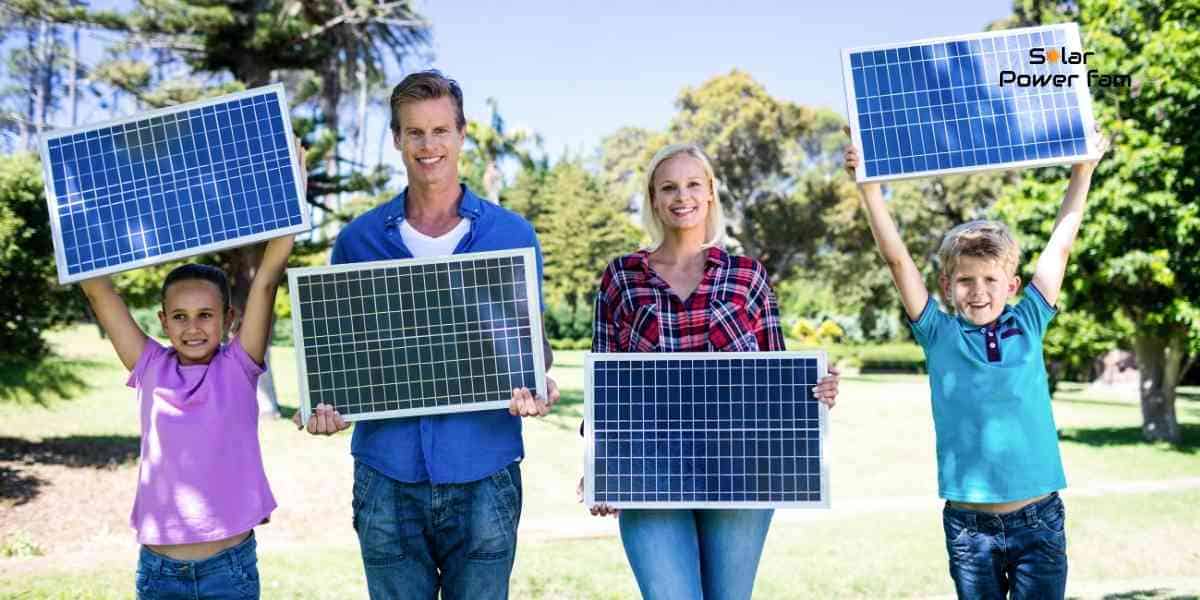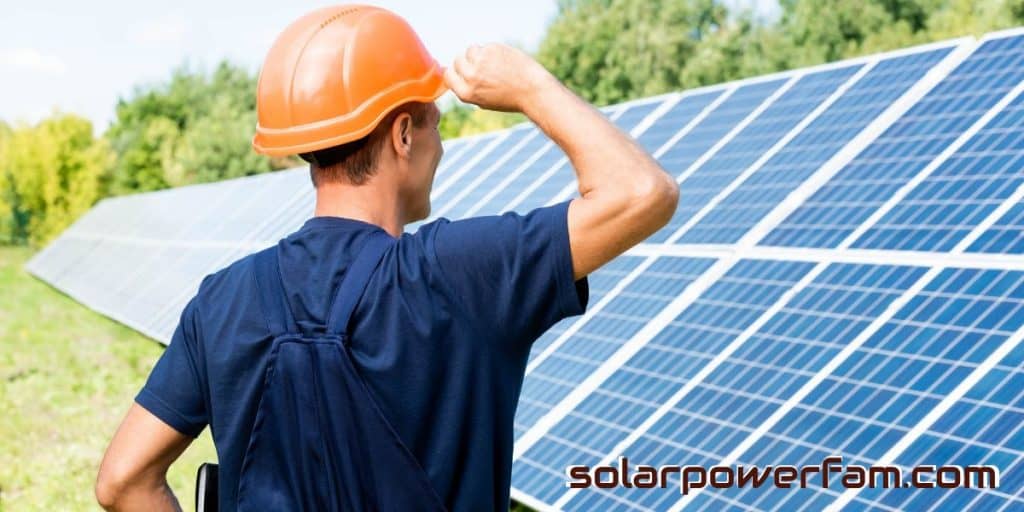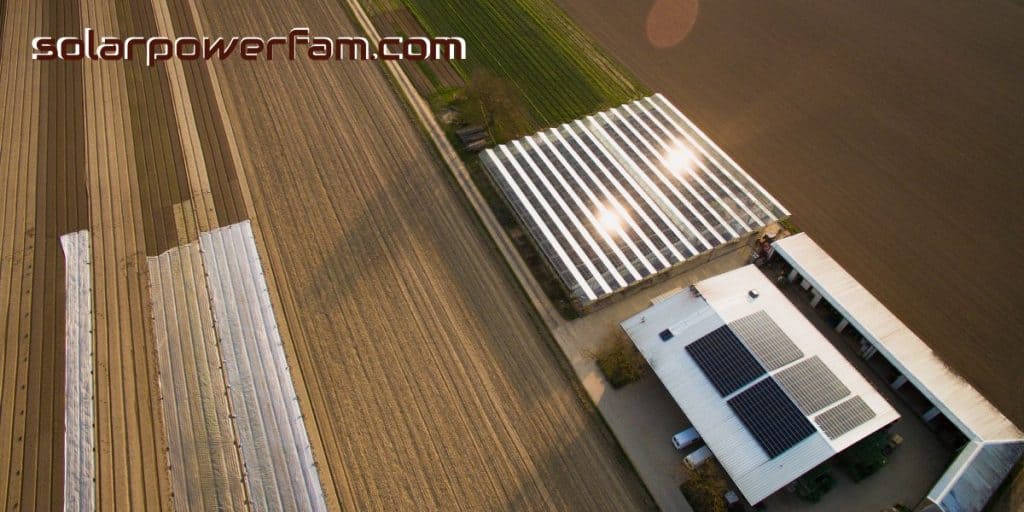Setting up a solar power system for domestic use is a very common choice these days as it saves money on your monthly bills, it has environmental benefits, and decreases your dependency on grid supply system, but the question that is raised by people who want to install solar power system that how many solar panels do I need for 1000 kwh per month? Roughly, you’ll need 28 solar panels each producing 250 watts solar electricity to get 1000 kwh power generation per month.
Read why do solar cells need inverter here.
The Formula To Calculate How Many Solar Panels Do I Need
- Daily Power Consumption in kWh = Monthly power consumption in kWh / 30
- Safety consideration daily consumption in kWh = Daily Power Consumption in kWh * 1.25
- Power consumption in watt hour = Safety consideration * 1000
- Needed Watts = Power consumption in watt hour / Peak hours of sunlight in your area
- Number of Panels required = Needed watts / Single solar panel power production in watts
How Many Solar Panels Do I Need For 1000 kwh Per Month

There are a few things that must be considered and will help you in calculating the number of solar panels.
- Load Consideration
- Sunlight Dependence
- Solar Panel Tilt Direction
Load Consideration
It totally depends upon your active load and electricity usage behavior, and if you are not a technician, then it could be a problem for you in calculating that. A simple solution is to go and check on your monthly electricity bill, which will show your monthly consumption in kWh.
You need to know your daily and peak energy consumption that’s why we first divide 1000 kWh by days, so, 1000/30 equals 33.34kWh energy consumption on average per day.
Now, when you have the detail of your daily power consumption in kilowatt hour, that is the minimum power your solar energy system needs to produce a day.
It’s safer to get 25% more power generation from the solar array in a day than your daily consumption, that way your solar energy system will last longer as it would not run on max load for much time.
For that, multiply your daily power utilization by 1.25. For 1000 kWh monthly solar electricity demand, it will be 33.34 × 1.25 = 41.675 kWh per day.
Sunlight Dependence
This is not a secret that solar power system converts solar energy into electric power, and power generation depends upon the peak sun hours.
Now you have daily power consumption plus the safety factor of 25% is 41.675kWh, let’s round that off to 42kWh.
Now you have daily power consumption plus the safety factor of 25% is 41.675 kWh, let’s round that off to 42 kWh. Now convert it from kWh or to watt-hour by multiplying it by thousand. So, 42 × 1000= 42,000 Watt hour.
Divide daily usage of power in watt-hours by peak sunlight duration in hours.
Let’s say it’s 6 hours per day. So, 42,000 / 6 = 7000 watts.
You need a solar array that is capable of producing 7,000 watts.
On average, solar panels available in the market produce 250 watts per panel, different manufacturers have solar panels of different production capacities and ask or check the solar panel power in watts, then divide the total need of power by solar panel, and you will have your number of solar panels for the solar array.
Here for us it is 7000 / 250 = 28 solar panels.
Here you have your answer to the question, how many solar panels do I need for 1000 kwh per month? It’s 28 panels each producing 250 watts of solar electricity.
What Adds Up The Required Solar Panels
There are factors on which power production of any solar PV system depends, and you should consider these factors if you wanted get better solar panel output.
- Geographic Locations
- Solar Panel Direction
- Solar Panel Tilt
Geographic Locations
Usually, people think that solar panels produce more power in warm regions than in colder regions, but it is not that way. To produce power, you need sunlight, and there are many colder regions that have quality peak sunlight hours than some warm regions that have low peak sun. Solar panel system works well in any region that has at least 4 hours of peak sun.
| Location | Peak Sun Hours (PSH) |
|---|---|
| Alabama | 3.5 to 4 |
| Alaska | 2 to 3 |
| Arizona | 7 to 8 |
| Arkansas | 3.5 to 4 |
| California | 5 to 7.5 |
| Colorado | 5 to 6.5 |
| Connecticut | 3 |
| Florida | 4 |
| Georgia | 4 to 4.5 |
| Idaho | 4 to 4.5 |
| Illinois | 3 to 4 |
| Indiana | 2.5 to 4 |
| Iowa | 4 |
| Kansas | 4 to 5.5 |
| Kentucky | 3 to 4 |
| Louisiana | 4 to 4.5 |
| Maine | 3 to 3.5 |
| Maryland | 3 to 4 |
| Massachusetts | 3 |
| Michigan | 2.5 to 3.5 |
| Minnesota | 4 |
| Mississippi | 4 to 4.5 |
| Missouri | 4 to 4.5 |
| Montana | 4 to 5 |
| Nebraska | 4.5 to 5 |
| Nevada | 6 to 7.5 |
| New Hampshire | 3 to 3.5 |
| New Jersey | 3.5 to 4 |
| New Mexico | 6 to 7 |
| New York | 3 to 3.5 |
| North Carolina | 4 to 4.5 |
| North Dakota | 4 to 4.5 |
| Ohio | 2.5 to 3.5 |
| Oklahoma | 4.5 to 5.5 |
| Oregon | 3 to 5 |
| Pennsylvania | 3 |
| Rhode Island | 3.5 |
| South Carolina | 4 to 4.5 |
| South Dakota | 4.5 to 5 |
| Tennessee | 4 |
| Texas | 4.5 to 6 |
| Utah | 6 to 7 |
| Vermont | 3 to 3.5 |
| Virginia | 3.5 to 4 |
| Washington | 2.5 to 5 |
| West Virginia | 3 |
| Wisconsin | 3.5 |
| Wyoming | 5.5 to 6 |
Solar Panel Direction
Always choose a direction that gives maximum hours of sunlight to solar panel interaction as the whole power production system depends on that. In the USA your panel should face the southern side.
A shade totally wastes your solar panel power production capability. That is why choose a place to install where there is no shade. On your rooftop little away from the boundary wall or the open ground with no close tree or any other shade would be the best option.
Solar Panel Tilt
Solar tilt means fixing the angle where you can have maximum power production. Many earlier studies focus on keeping solar panels at 45 ̊ but that can not be a perfect angle for the whole world as the country near the equator will have a very low solar panel to sunlight interaction at that angle.
I suggest you to search the latitude angle of your location through map or Google, then add simply 15 ̊to it. Like if your latitude angle is 35 ̊then tilt your solar at 50 ̊.
You can use the best solar tilt calculator here as well.
How Many Solar Panels Do I Need For 1000 kwh Per Month With Different Solar Cells
There are various types of solar panels in the market, and they all have different efficiency of converting solar energy into electric power. The more efficient your solar panel is, the less size it will require to produce the same power. So, I will discuss types of solar based on their efficiency.
- Shingled Mono PERC Solar Cells and Half-Cut mono PERC MBB solar cells have the same efficiency up to 20.5%, and for the same size of the load, you will require 20.8% fewer solar panels.
- Half-cut mono PERC solar cells are efficient up to 20%, and for the same size of the load, you will require 25% fewer solar panels.
- Mono PERC cells are efficient up to 19%, and for the same size of the load, you will require 21% fewer solar panels.
- Poly PERC solar cells are efficient up to 17%, and for the same size of the load, you will require 11.7% fewer solar panels.
N-type IBC Solar Cell
N-type IBC are the most efficient solar cells in the market with an efficiency of up to 23%, but due to their marginal cost customer choose to buy them comparatively less. What they don’t know is for the same size of load requirement, you will require 34% fewer panels than standard module panels.
Half-cut MBB Heterojunction Solar Cell
This type of solar panel instead of using 60 large cells as in normal panels, has 120 smaller cells that produce more power compared to the standard module solar panels. It has an efficiency of up to 22%, but due to its very complex structure and design, it requires more technical input while manufacturing and is expensive. Against a standard module panel, you will require 31.8% fewer solar panels for the same load.
PERC Solar Cell
Passivated emitter and rear contact solar technology is one of the most used technology by manufacturers as it has the same manufacturing cost as standard modules with greater efficiency. By making small changes, you can get different efficiency output from the Solar PERC cells. The number of solar panels required for a different type of PERC solar cells is as under.
Read my guide on monocrystalline vs. polycrystalline solar panels here.
Solar Power System Vs. Utility Grid For 1000 kwh Per Month
The life of a Solar power system is 25 years if maintained properly. Whether you take the power supply from the grid or solar power system, both require a bit of maintenance, and we compensate their maintenance with each other.
An average USA domestic electricity consumer pays a bill of 144.44 US dollars. If we take that as an average bill for the next 25 years, it will cost a domestic consumer $43,332. The price of electricity keeps rising every other month, but we assumed that according to the average bill today.
Keeping that in mind, it might cost you more than $70k in the span of the next 25 years. For that average size domestic consumer solar power system installation would cost you $12,000.
So, a solar power system is a great replacement for grid supply economically too. You will get back your invested money in the span of 5 years, then all other years of use will go to your benefit.
FAQ
You’ll need a solar array having 28 panels producing 250 watts solar electricity for 1000 kwh per month. That’s considering the efficiency and harmonic distortion.
You’ll also need high quality inverters with good panels for consistent power generation. Here’s my guide to solar inverters for you. Also read my guide on How Much Do Solar Panels Cost For 1,500, 2,500 & 3,000 Square Foot House here.




